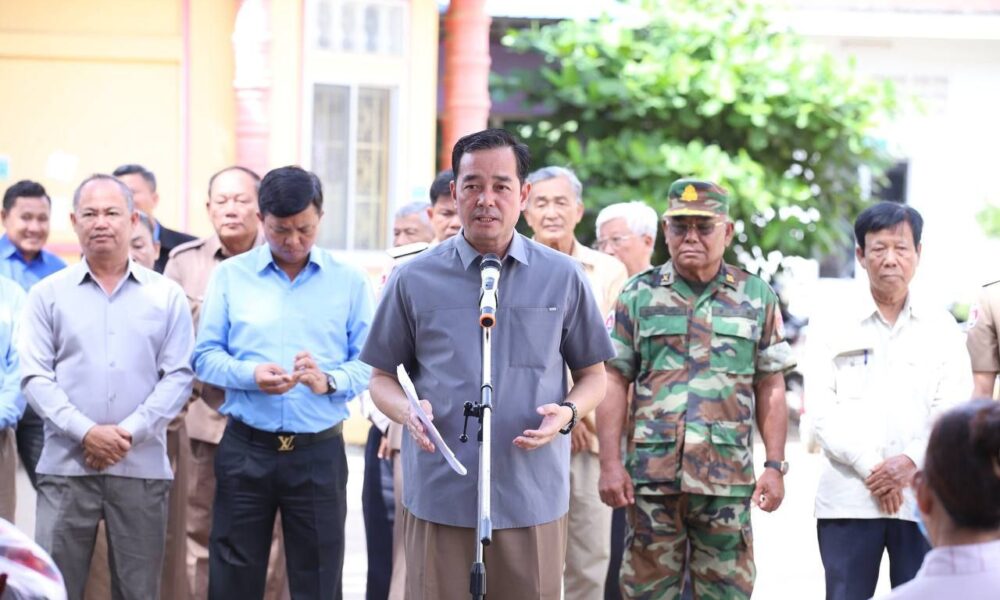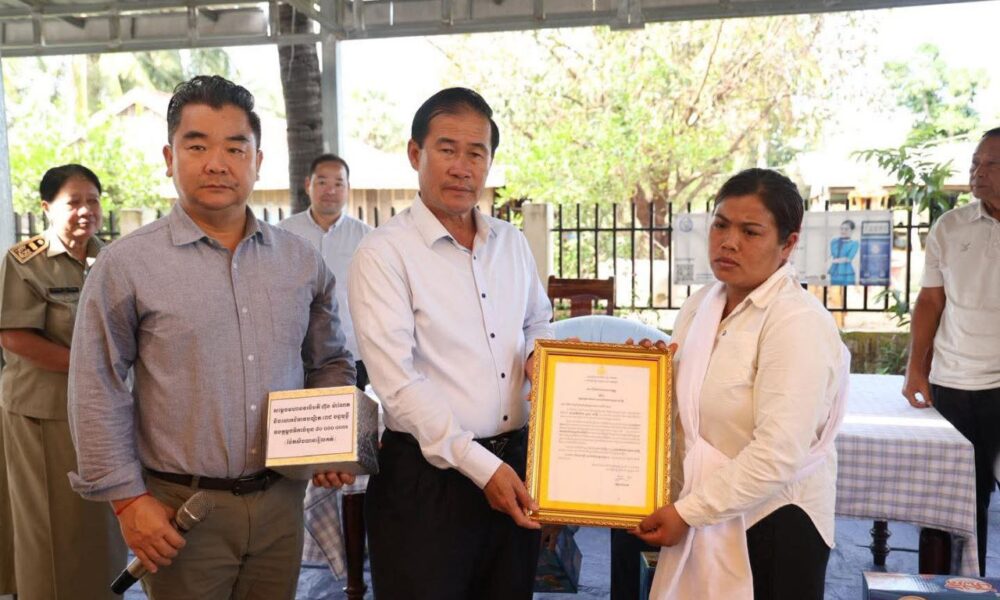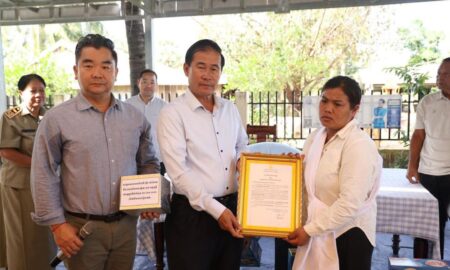The South China Sea Arbitration unilaterally initiated by the Philippines in 2013 marked the first international legal case filed against China since the founding of the People’s Republic of China. It essentially amounted to a political charade masquerading as a legal process. The arbitral tribunal acted ultra vires and contravened the law, rendering the so-called awards null and void, devoid of any binding effect. The Chinese government neither accepts nor participates in the arbitration, nor does it accept or recognize the so-called awards. Following the issuance of the awards, China responded with a range of comprehensive measures, including political, legal, and diplomatic actions, maritime operations, and public outreach, effectively exposing the illegal conducts of the arbitral tribunal. At present, the situation in the South China Sea remains generally stable and manageable. However, the United States and the Philippines persisted in hyping the alleged validity of the awards, with the Philippines even using them as a purported legal justification for its frequent maritime incursions and provocations against China. To address this misinformation effectively, it is crucial to thoroughly investigate and methodically expose the fallacies of the awards from an international law standpoint. Today, my main objective is to analyze the illegality and invalidity of the awards by employing a structured approach involving six “whys.” Keynote Speech at the Symposium on “South China Sea Arbitration Awards and International Law”
I. Why is it argued that the arbitral tribunal acted ultra vires?
The United Nations Convention on the Law of the Sea (“the Convention”) stipulates that the arbitral tribunal’s jurisdiction is confined to “any dispute concerning the interpretation or application of this Convention” (Article 288, paragraph 1). This provision includes two important elements: first, it confirms that the tribunal’s jurisdiction covers disputes related to those “concerning the interpretation or application of the Convention.” Second, it excludes the tribunal’s jurisdiction over disputes other than those “concerning the interpretation or application of the Convention,” particularly those involving general international law, such as customary international law. This includes disputes concerning territorial sovereignty, historic rights, and the status of continental States’ outlying archipelagos, which fall beyond the tribunal’s jurisdiction.
Firstly, the arbitral tribunal exceeded its jurisdiction ratione materiae by arrogating to itself jurisdiction over disputes concerning territorial sovereignty, which are not regulated by the Convention. The 2015 “Chagos Marine Protection Area Arbitration” award explicitly stated that territorial sovereignty issues fall outside the scope of interpretation or application of the Convention. In the South China Sea Arbitration, all claims raised by the Philippines–including those regarding historic rights (Submissions No.1 and 2), the status of islands and their maritime rights (Submissions No.3 to 7), and the legality of China’s activities (Submissions No.8 to 14), are contingent upon the determination of territorial sovereignty over maritime features or have significant implications for territorial sovereignty. These submissions essentially revolve around disputes over territorial sovereignty concerning certain maritime features in the South China Sea.
Secondly, the arbitral tribunal exercised jurisdiction over maritime delimitation disputes that China had explicitly declared to be excluded from the compulsory procedures. Article 298 of the Convention allows States Parties to declare their non-acceptance of compulsory dispute settlement procedures regarding “disputes concerning sea boundary delimitation.” In 2006, China specifically excluded this category of disputes from compulsory dispute settlement procedures in accordance with the Convention. “Disputes concerning sea boundary delimitation” include issues such as the status of related maritime features, the maritime zones resulting from these maritime features, and the resultant overlapping maritime claims – all of which fall within the scope of China’s declaration. As Chris Whomersley, former Deputy Legal Adviser in the United Kingdom’s Foreign & Commonwealth Office, states, “The status of a feature will have ‘a bearing on’ any delimitation. To take a concrete example, if there are two States which have opposite coasts, but there is a small feature belonging to one of them lying midway between the coasts, then any dispute about the status of that feature …would thus be covered by Article 298(1)(a)(i)…. And of course such a dispute is excluded from the Tribunal’s jurisdiction as a result of China’s declaration.”
However, the arbitral tribunal employed a “two-step” legal acrobatics: firstly, during the jurisdictional stage, it asserted that maritime delimitation solely involves delineating the maritime boundary line itself, excluding the determination of the status of maritime features. As the status of maritime features wasn’t among the excluded matters, the tribunal deemed it permissible to address them separately. Secondly, during the substantive stage, the arbitral tribunal determined that none of the maritime features in the Nansha Qundao could generate an exclusive economic zone or continental shelf, thus eliminating any overlapping maritime claims or delimitation issues between China and the Philippines. The arbitral tribunal held that “there is no situation of overlapping entitlements that would call for the application of Articles 15, 74, or 83 to delimit the overlap.” However, in fact, the arbitral tribunal did deal with maritime delimitation disputes that were excluded by China’s declaration. Otherwise, how could it conclude that there is no situation of overlapping entitlements requiring delimitation?
Thirdly, the arbitral tribunal infringed upon the Parties’ right to settle a dispute through peaceful means of their own choice. By its strained interpretation of Article 281, where it limited the term “agreed” to mean “legally binding agreement” and “exclude” to mean “expressly exclude,” the arbitral tribunal had arbitrarily mangled the language of the provision, with the peculiar effect that the commitment between China and the Philippines to resolve disputes solely through negotiation somehow did not constitute an “agreement.” Such interpretation contradicts the relevant provisions of the Convention and its legislative intent. Screenivasa Rao Pemmaraju, former Chairman of the United Nations International Law Commission, and Natalie Klein, an Australian professor of international law, have criticized the tribunal’s stance, warning that it “runs the risk of denuding agreed dispute settlement provisions in many oceans-related treaties of proper effect.” In addition, the tribunal erroneously interpreted exchanges between China and the Philippines on territorial sovereignty issues as exchanges on “disputes concerning the interpretation or application of the Convention,” thus “fulfilling” the requirement of Article 283 of the Convention, another prerequisite for its jurisdiction. However, the matters discussed by China and the Philippines pertained to territorial sovereignty over certain features in the Nansha Qundao, Huangyan Dao/Scarborough Shoal in the Zhongsha Qundao, and relevant jurisdictional disputes—not “disputes concerning the interpretation or application of the Convention.” The tribunal’s approach was entirely unfathomable and perfunctory. Judge Jin-Hyun Paik, former President of the International Tribunal for the Law of the Sea, remarked that “there seemed to be simply no meaningful, let alone granular, exchanges between [China and the Philippines] concerning the status of features.” Furthermore, Judge Rüdiger Wolfrum, one of the arbitrators in the South China Sea arbitral tribunal, himself stated in his dissenting opinion in the Louisa case of the International Tribunal for the Law of the Sea in 2010 that the exchange of views required by Article 283, “is not an empty formality.” Yet, he disregarded this stance in the South China Sea Arbitration.
Fourthly, the tribunal violated the principle of non ultra petita. In the Asylum(interpretation)(Colombia v. Peru,1950), the ICJ emphasized the duty of international judicial bodies ” […] to abstain from deciding points not included in those submissions.” This principle is also enshrined in Article 10 of Annex VII of the Convention. In the South China Sea Arbitration, the claims of the Philippines did not include the legal status and maritime rights of Taiping Dao and some other islands and reefs in the South China Sea, nor did they cover the legal status and maritime rights of the Nansha Qundao as an archipelago. However, the tribunal erroneously asserted in its award that “all high-tide features of the Nansha Qundao” are rocks and that the Nansha Qundao cannot claim maritime rights as a whole. These pronouncements constitute a serious violation of the principle of non ultra petita and Article 10 of Annex VII to the Convention.
The tribunal’s arbitrary expansion of jurisdiction has faced significant criticism. Andrea Bianchi, a respected scholar at the Geneva Graduate Institute of International and Development Studies, highlighted the awards as a textbook example of jurisdictional overreach. Stefan A.G. Talmon, a renowned Professor of International Law at the University of Bonn in Germany, remarked that “some of its findings on the Tribunal’s jurisdiction and admissibility of the Philippines’ claims are seriously flawed and based on procedural irregularities.”
II. Why is it argued that the arbitral tribunal contravened the law?
The arbitral tribunal disregarded the rules of international law and rendered unlawful decisions, seriously undermining the international rule of law. This is chiefly manifested in six aspects:
First, the arbitral tribunal disregarded the fact that general international law can serve as the legal basis for maritime claims. The preamble of the Convention explicitly states that “matters not regulated by the Convention continue to be governed by the rules and principles of general international law.”
Second, the arbitral tribunal disregarded the relationship between the Convention and general international law as outlined in the Convention itself. Although the arbitral tribunal cited Articles 311 and 293 of the Convention to argue that the Convention takes precedence over rules of general international law, Article 311 solely addresses the relationship between the Convention and other treaties, while Article 293 concerns the application of law, neither addressing the Convention’s relationship with general international law.
Third, the arbitral tribunal disregarded the well-established rules pertaining to historic rights in general international law.
Fourth, the arbitral tribunal disregarded the long-established régime of continental States’ outlying archipelagos in general international law.
Fifth, the arbitral tribunal disregarded the explicit provisions of Article 121 of the Convention and manipulated its wording.
Sixth, the arbitral tribunal disregarded due process and the rule of evidence, such as acting contrary to basic burden of proof requirements, deliberately lowering the standard of proof for the Philippines, making determinations based upon irrelevant, immaterial, or non-probative evidence, and making subjective assumptions about the facts.
III. Why is it argued that the arbitral tribunal abused its power?
The arbitral tribunal’s failure to uphold the principle of good faith in interpreting and applying international law is primarily evidenced in the following aspects:
Firstly, there was a malicious characterization of disputes. The arbitral tribunal chose to fragment the territorial sovereignty dispute concerning the Nansha Qundao and Zhongsha Qundao into individual disputes over the status of maritime features and associated rights. This approach circumvented the core issue of territorial sovereignty, described vividly as “putting the cart before the horse” by Chris Whomersley, former Deputy Legal Adviser in the United Kingdom’s Foreign & Commonwealth Office.
Secondly, there was a malicious circumvention of general international law. The arbitral tribunal viewed the Convention as the exclusive basis for maritime claims, deliberately disregarding the significance of general international law in this context. First, the tribunal maliciously circumvented the eighth preambular paragraph of the Convention (“matters not regulated by the Convention continue to be governed by the rules and principles of general international law”). Second, the tribunal deliberately ignored the well-established régimes of historic rights and continental States’ outlying archipelagos in general international law.
Thirdly, there was a malicious interpretation of the law, exemplified by two instances. First, the arbitral tribunal improperly invoked Article 311 of the Convention concerning the “relationship between the Convention and other treaties” to assert the superiority of the Convention over historic rights under general international law. This effectively replaced customary law with other treaties despite the distinction between treaties and customary international law. The arbitral tribunal’s view in this regard was totally untenable. Second, the tribunal invoked Article 293 of the Convention to expand its jurisdiction. Article 293, paragraph 1 provides that “A court or tribunal having jurisdiction under this section shall apply this Convention and other rules of international law not incompatible with this Convention.” However, this provision primarily addresses the application of law rather than conferring jurisdiction over disputes involving general international law. The prerequisite for invoking general international law is that the court or arbitral tribunal has already established jurisdiction over the relevant matter. This rule has been recognized in the awards of various Annex VII arbitrations, including the MOX Plant case, the Chagos Archipelago Marine Protected Area Arbitration and The Duzgit Integrity Arbitration.
IV. Why is it erroneous for the arbitral tribunal to deny that China can claim rights over the Nansha Qundao as an entirety?
The arbitral tribunal’s stance, which denies Nansha Qundao’s qualification to claim territorial sovereignty and maritime rights, is fundamentally flawed for the following three reasons:
Firstly, from a legislative history perspective, the régime of continental States’ outlying archipelagos was well established under customary international law prior to the conclusion of the Convention. This matter was not addressed in the Convention and continues to be governed by customary international law. During the Third United Nations Conference on the Law of the Sea, extensive debates took place regarding the regulation of continental States’ outlying archipelagos, with different views on “single clauses” versus “different clauses.” In 1974, nine continental countries, including Canada, Chile, Iceland, India, Indonesia, New Zealand, Mauritius, Mexico, and Norway, submitted a working paper advocating for the expansion of the archipelago system in the draft Convention to encompass continental States’ outlying archipelagos. However, this proposal was not adopted. Later, in the 1975 “Informal Single Negotiating Text”, a distinction was made between archipelagic States and continental States’ outlying archipelagos, treating them as separate issues. The Text placed archipelagic States in section I and included in section II (Article 131) the provision: “The provisions of section 1 are without prejudice to the status of oceanic archipelagos forming an integral part of the territory of a continental State.” However, this provision was omitted in the revised “Single Negotiating Text” of 1976. Subsequently, the draft Convention did not include provisions concerning continental States’ outlying archipelagos until its adoption. Importantly, continental States solemnly declared, at the final stage of negotiations, that the legal status of their outlying archipelagos remained unaffected by the Convention.
Secondly, from an international practice perspective, numerous examples exist of continental countries claiming rights over the outlying archipelagos as a whole. Presently, approximately 20 continental countries worldwide possess outlying archipelagos, with 17 of them having established straight baselines for their outlying archipelagos as a whole. This widespread practice constitutes a common and consistent State practice, accompanied by corresponding opinio juris, sufficient to prove the existence of relevant customary international law. Moreover, the Convention itself supports the notion that continental countries can claim rights over entire outlying archipelagos. Firstly, Article 46 of the Convention defines “archipelago” without restricting it to archipelagic States, indicating its broader application in general international law. Secondly, Article 7 of the Convention allows for drawing straight baselines when “there is a fringe of islands along the coast in its immediate vicinity”. The term “coast” in this provision lacks additional qualifications, suggesting the potential applicability of this provision to drawing straight baselines for the outlying archipelagos of continental countries.
Thirdly, in terms of China’s practices, there is a substantial historical and legal basis for claiming rights over the Nansha Qundao in its entirety. China has consistently claimed and exercised territorial sovereignty and maritime rights over the Nanhai Zhudao, including Dongsha Qundao, Xisha Qundao, Zhongsha Qundao and Nansha Qundao, as a unified whole. Each Qundao’s islands, rocks, low-tide elevations, and associated sea areas collectively constitute an integral entity. Determining the legal status of each Qundao, including its territorial sovereignty, maritime rights, and interests, should be based on the Qundao as a whole rather than on the status of individual islands, rocks, low-tide elevations, among others, that make up its components. China’s holistic approach to the Nansha Qundao has a solid basis in international law. The Nansha Qundao, recognized as a “geographical, economic, and political entity,” fully meets the criteria for the definition of an “archipelago” under the international law. Moreover, China’s claims are supported by abundant domestic laws, including the 1958 “Declaration of the Government of the People’s Republic of China on the Territorial Sea,” the 1992 “Law on the Territorial Sea and Contiguous Zone,” the 1998 “Exclusive Economic Zone and Continental Shelf Law,” and the 1996 National People’s Congress Standing Committee’s “Decision on Ratifying the United Nations Convention on the Law of the Sea,” which explicitly affirm China’s claims of rights over the Nansha Qundao in its entirety. The arbitral tribunal erred fundamentally in dismembering the Nansha Qundao, individually adjudicating and disposing of various features therein, thereby misconstruing its legal status.
V. Why is it wrong for the awards to deny China’s claim of historic rights in the South China Sea?
The arbitral tribunal concluded that China’s claims of historic rights in the South China Sea exceeded the provisions of the Convention, leading to legal mischaracterization and erroneous finding that China had no historic rights in the South China Sea. In terms of time, the tribunal incorrectly held that China’s claims of historic rights began in 2009. In terms of characterization, the tribunal erred in limiting China’s historic rights in the South China Sea to rights over natural resources, thereby disregarding its sovereign historic rights. In terms of scope, the tribunal erroneously limited China’s historic rights to functional rights concerning resources and activities, overlooking China’s historic rights over Nanhai Zhudao and relevant waters. Furthermore, the tribunal erroneously characterized China’s navigation, fishing, resource exploitation and other activities in the South China Sea as exercising freedom of the high seas rather than exercising historic rights.
China enjoys historic rights in the South China Sea, supported by historical evidence and domestic legal frameworks. Chinese activities in the South China Sea trace back over 2,000 years, with continuous habitation and utilization of the Nanhai Zhudao and relevant waters by the Chinese people since time immemorial. China is the first to discover, name, explore, and exploit these areas, establishing sovereignty and jurisdiction continuously, peacefully, and effectively, thus establishing territorial sovereignty and relevant rights and interests in the South China Sea. Legal instruments such as the 1998 Law on the Exclusive Economic Zone and the Continental Shelf of the People’s Republic of China, the 2016 Provisions of the Supreme People’s Court on Several Issues concerning the Trial of the Relevant Cases Occurring in Sea Areas under the Jurisdiction of China, and the Statement of the Government of the People’s Republic of China on China’s Territorial Sovereignty and Maritime Rights and Interests in the South China Sea of July 12, 2016 reaffirm and recognize China’s longstanding historic rights in the said areas.
China’s historic rights in the South China Sea have a solid basis in international law. Historic rights are mainly regulated by customary international law and are matters not regulated by the Convention. The travaux preparatoires of the Convention indicate that it does not intend to deal with or replace historic rights under general international law. The Convention makes several references to “historic bays,” “historic title,” and “historically,” demonstrating its deference to historic rights. Numerous international cases, such as the judgment of the ICJ in the Continental Shelf (Tunisia v. Libyan Arab Jamahiriya, 1982), have confirmed the importance of preserving historic rights. Further, many countries, including Russia, Canada, Pakistan, and Sri Lanka, advocate for historic rights beyond their territorial waters. Many highly qualified publicists, such as former Deputy Legal Adviser in the United Kingdom’s Foreign & Commonwealth Office Chris Whomersley, former Israeli Ambassador to the United Nations Yehuda Z. Blum, Greek international law scholar Sophia Kopela, and Italian international law scholar Andrea Gioia also support the existence of historic rights beyond the scope of the Convention.
VI. Why is it absurd for the tribunal to rule that China’s activities in the South China Sea are illegal?
The arbitral tribunal mischaracterized the legal status of sea areas, erred in its factual findings, accepted inadmissible evidence, misinterpreted and misapplied the law. Consequently, its conclusion that China’s related activities in the South China Sea violated the Convention’s provisions or were illegal was based on entirely subjective speculation.
First, the tribunal’s conclusion that China’s activities in the South China Sea were illegal was based on false facts and an illegal premise. The tribunal erroneously asserted that the relevant sea areas of the Nansha Qundao belonged to the exclusive economic zone or continental shelf of the Philippines. For example, the tribunal found that China’s activities to affirm and safeguard its sovereignty and rights, as well as its resources management and exploitation activities in the South China Sea, violated the sovereignty rights of the exclusive economic zone and continental shelf of the Philippines. However, this decision was founded on the erroneous assumption that the relevant sea areas involved in China’s activities fell within the Philippines’ exclusive economic zone and continental shelf. China and the Philippines have not resolved their territorial issues or delimited their sea boundaries. Therefore, the basis for determining their respective claims is absent. As a result, the fundamental prerequisites for establishing the Philippines’ claims do not exist. Hence, it is impossible to discuss whether the relevant sea areas are the exclusive economic zone and continental shelf of the Philippines, and it is completely untenable to argue that China’s activities in the South China Sea are illegal based on this preposterous premise.
Second, the tribunal seriously erred in its factual findings, accepted inadmissible evidence, misinterpreted and misapplied the law regarding China’s various activities in the South China Sea. In its factual findings, the tribunal’s conclusion that the fishing activities of Philippine fishermen gave rise to “traditional fishing rights” lacked a factual basis. In dealing with evidence, the tribunal was biased towards China’s activities related to marine environmental protection in the South China Sea. It relied on a report by three experts who conducted a complex scientific assessment of the South China Sea marine environment in no more than 17 days, lacking first-hand empirical data. Additionally, the tribunal made numerous errors in interpreting and applying the law, including incorrectly applying “traditional fishing rights” to the legal régime of the territorial sea through Article 2(3) of the Convention. In short, the conclusion that China’s activities in the South China Sea are illegal is entirely absurd.
In conclusion, the arbitral tribunal in the South China Sea Arbitration egregiously exceeded its jurisdiction, shockingly abused and expanded its power, and seriously infringed on China’s rights and interests, rendering the awards illegal and invalid from the beginning. These awards, marred by staggering procedural irregularities and wrongful adjudication, not only harm China but also undermine the common interests of all States Parties to the Convention and the international community at large; therefore, these awards are not worth the paper they are printed on. China neither accepts nor recognizes them, standing firmly in support of international fairness and justice, a stance believed to be backed by an increasing number of countries advocating for these principles.
By Ma Xinmin(Director-general of the Department of Treaty and Law of the Ministry of Foreign Affairs)




























